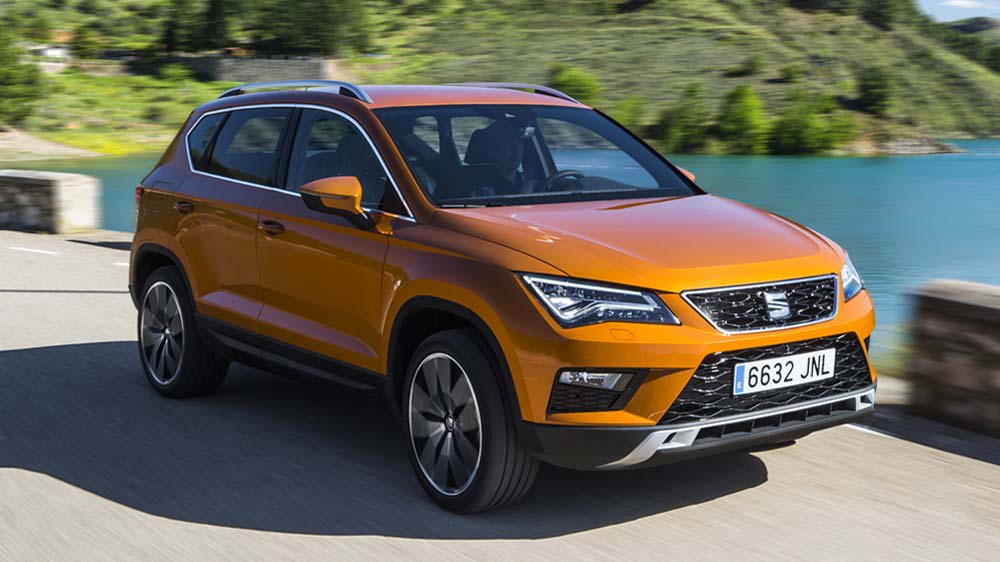
Seat Ateca Review

Introduction
If you want a car that’s more stylish than a Volkswagen but not quite so ruthlessly competent as a Skoda, there’s an option for that. Spanish brand SEAT exists to sell cars that are, in essence, rebadged Volkswagens, but the company manages to imbibe them with some Spanish flair.
While it now counts the Tarraco and Arona amongst its SUV models, the Ateca - first released in 2017 - was the company's first effort and, despite being very late to the ‘SUV all the things’ party, it rocked up with a class-leading effort.
We love the Volkswagen Tiguan and Skoda Karoq, cars that are mechanically all but identical to the SEAT Ateca, so can the Spaniards do enough to stand out from its relatives?
Review Sections
Select's rating score* - 4.1 / 5
At a Glance
Despite the promised Spanish flair, the Ateca is as generic as it comes. It takes a conventional body shape and bolts a mildly interesting front end to it but, frankly, there’s little that makes the Ateca stand out visually from the myriad rivals available - including from within the Volkswagen Group.
It’s pretty normal inside, with no dramatic swept lines or confusing angles. Instead, there's just a conventional dashboard, although the air vents are slightly angled. Those quirky designers!
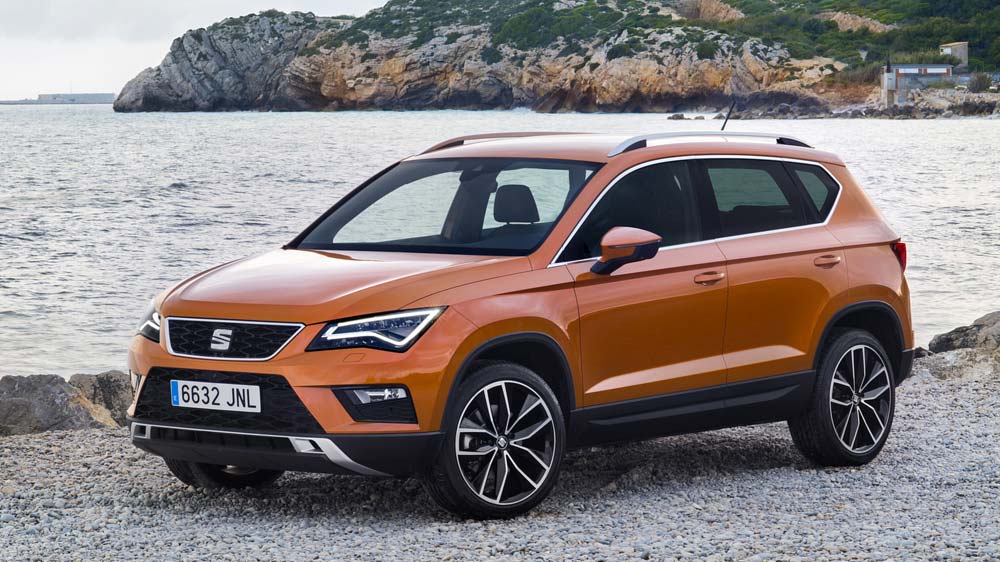
It’s bigger than it looks, making it a more practical choice than some of its more dated rivals - we’re looking at you, Nissan Qashqai, but some rivals offer more. Again, some of those come from within the Volkswagen Group.
It all looks and feels a little bit ordinary but, rather than having a couple of highlights and a list of weaknesses, it manages to pull off everything well. Excitement isn’t high on the list, but there’s no doubting the Ateca’s got the chops to compete with the best in class.
Key Features
When you’ve built your car around an otherwise identical model, it’s difficult to stand out with technology and features that are unique. Everything you find in the SEAT, you’ll also find in a Skoda, Volkswagen or Audi, in one form or another.
Don’t be fooled into thinking that’s a bad thing, though; when something is right, it’s right.
So how does the Ateca stand out? Its engineers have set it up to drive a little more enthusiastically than its rivals, engaging in a way that a Qashqai never will. That’s bound to bring compromises, but you might just be happy with that.
Performance & Drive
Entry models have a 1.0-litre petrol engine under the bonnet. You might think that’s not enough for the job, but it delivers strong performance from its 115hp, although it needs working very hard.
A better bet is the excellent 1.50litre petrol engine with its 150hp output. It’s smooth, quiet, has plenty of low-rev power and will quite happily join in the fun when you want to explore limits. The essential 0-62mph dash is dealt with in 8.5 seconds, which should surprise your passengers and the dog.
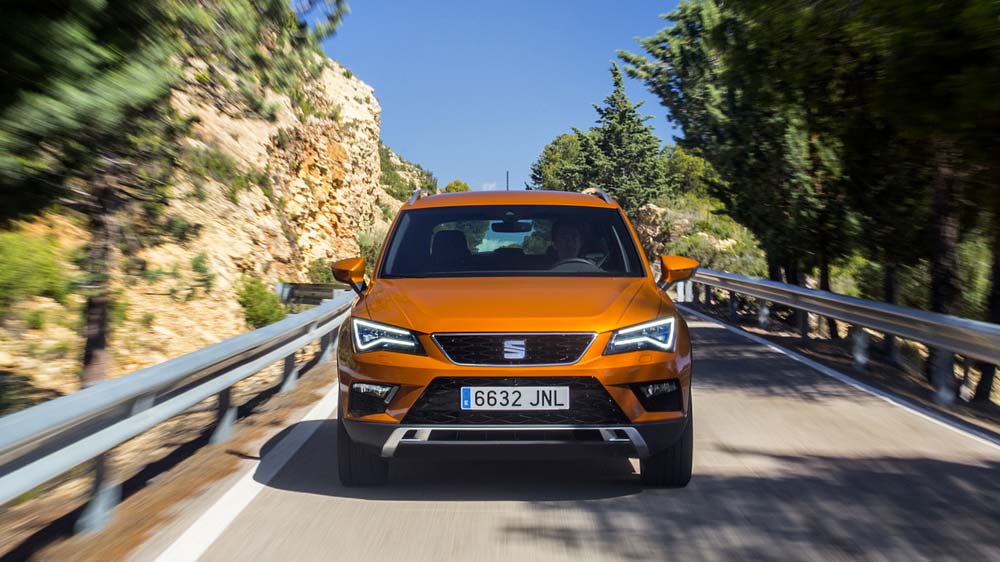
You can go quicker with the 2.0-litre model, but it adds a lot of expense and isn’t necessary. Likewise, a diesel model will make towing a breeze but, for most, is an expensive alternative that’s not required.
Cruise along and you’ll find the Ateca’s suspension perhaps just a little too stiff, and it jostles across all those road surface issues in town without properly dealing with them. It’s not uncomfortable as, by regular car standards, it’s still quite smooth, but tall SUVs are sprung less firmly to make it easier for them to deal with driving when five up and fully loaded.
The Ateca doesn’t bother with that, instead engaging the driver on twistier roads in a way that most SUVs fail to do so. There’s little body roll,m leaving the SEAT feeling nimble and agile, with precise and direct steering making it a cinch to pretend you’re a race driver aiming for every apex.
Ultimately, it gives up grip earlier than a similar estate car, but there’s no doubt that the parents in a young family who still believe they have a life ahead of them will appreciate the zest the Ateca provides.
Running Costs
There’ll be few SUVs significantly cheaper to run than the Ateca; the combination of the ubiquity of the parts, the generally solid build quality and the reasonably strong residual values means lifetime costs should be kept well in check.
The Skoda Karoq will, undoubtedly, be a little cheaper each month, but most other rivals will be about the same or marginally more expensive. As long as you’re remaining in the realm of mass-market models, there’s little to choose from. Of course, start comparing with premium models such as the Volvo XC40 and the BMW X1 and you’ll start to see some serious savings.
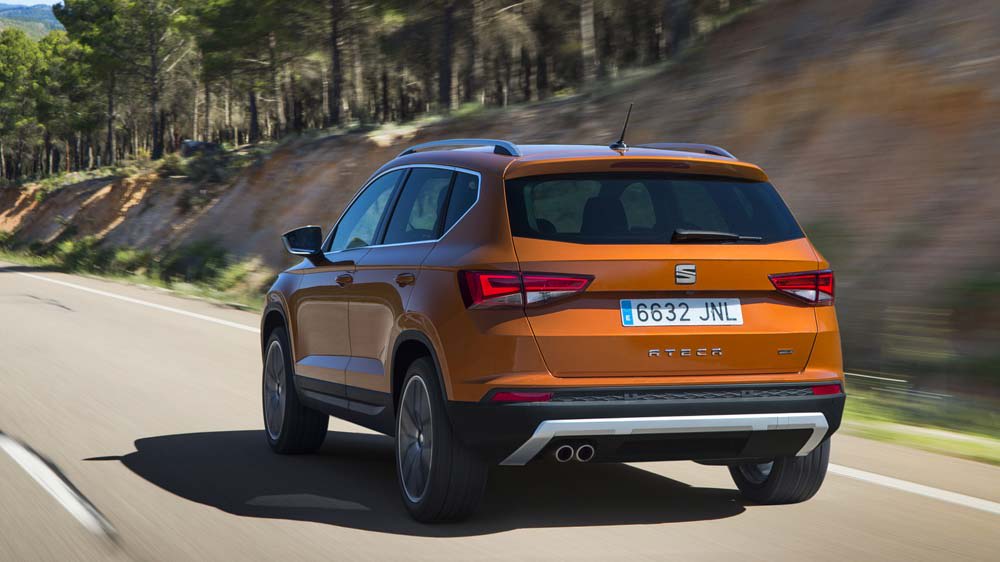
Fuel economy hovers around 40mpg for the petrol models, rising to 50 for the diesel cars. The extra £2,500 or so to upgrade to the diesel models will mean you need to cover around 100,000 miles before you start seeing a profit.
Every SEAT is covered by a three-year warranty, although it’s limited to just 60,000 miles. It’s possible to extend that to five years for a fixed fee, while servicing can be rolled into a monthly payment to spread costs and escape any price increases.
Diesel models, despite their expense, produce lower emissions than petrol models, which might appeal to company car drivers. Pick well and emissions drop as low as 141g/km of CO2, which results in a BIK burden of 35%.
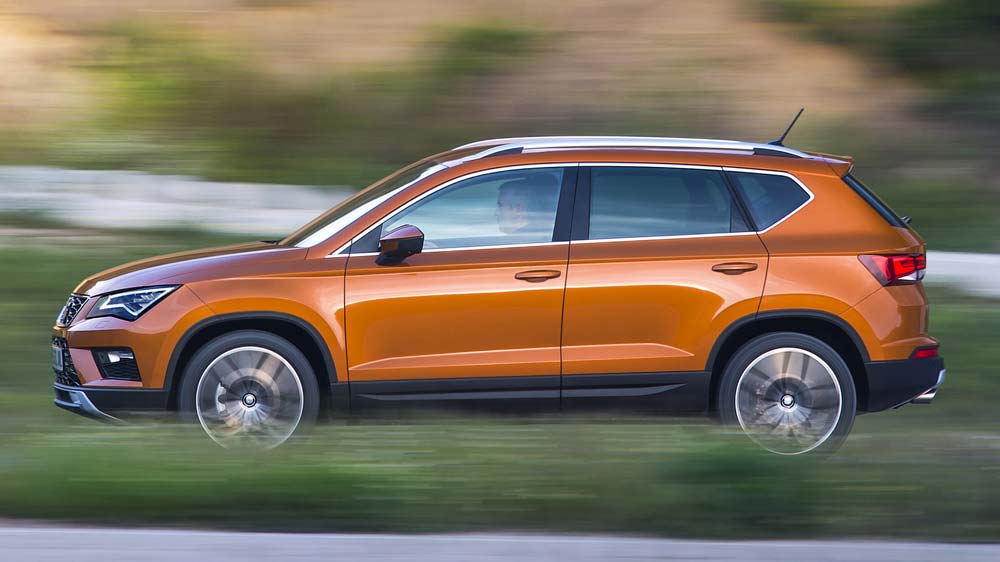
Most models hover around the 150g/km mark, with the four-wheel-drive option adding an extra 15 to that figure. At the top end, users of the Xcellence Lux model powered by the 2.0-litre 190hp petrol engine will find a tax bill based on 188g/km.
However, being a petrol model it avoids the government’s 3% company car tax uplift, resulting in a 37% benefit in kind rating.
All models attract the standard £150 a year car tax bill, with none of the range tipping over into the more expensive £40,000+ category.
Interior
Despite that stiff suspension, it’s very easy to get comfortable in the Ateca thanks to a carefully considered cabin. Seat adjustments, pedal positioning and even windscreen pillar thickness all seem to align nicely, allowing for a great driving position to be adopted.
The seats are sportier than you’ll find in more luxury-oriented rivals but, ultimately, there’s little to get too excited about in front of you.
The dashboard is nice enough, with a digital instrument binnacle on higher specification models, and a large infotainment screen mounted to the left. This is better integrated into the dashboard than many others, but still looks like a black rectangle placed indelicately in a swathe of grey plastic. The only visual excitement comes from the air vents, which are angled slightly. The infotainment centre’s software also presents its graphics in a similarly angled way but, frustratingly, it’s a slightly different angle.
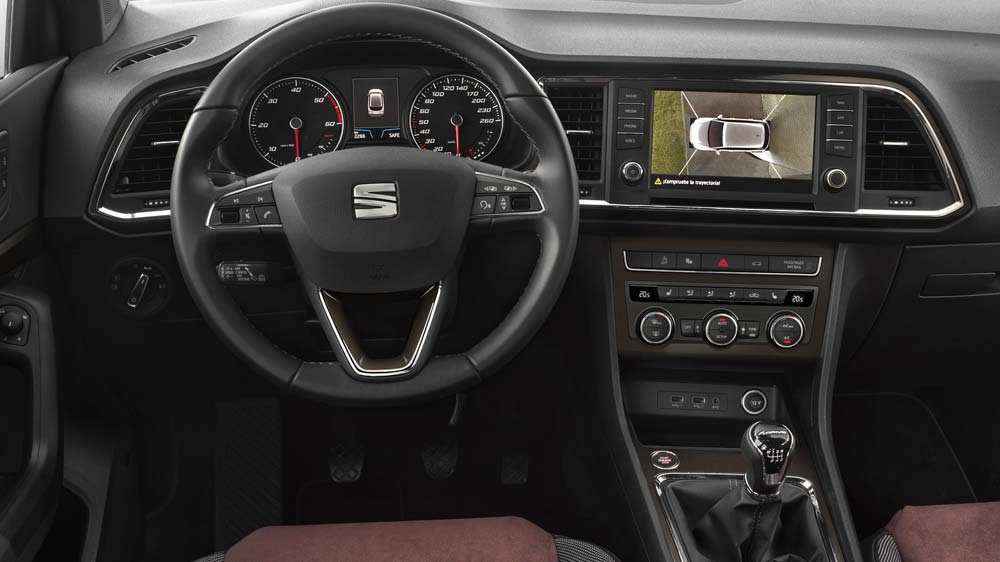
The software is shared across the Volkswagen Group, albeit with SEAT’s pizazz applied sparingly. It’s fine to use, with no frustrating delays or slowdowns, but it’s not entirely intuitive and some options seem to be unnecessarily hidden away. Still, there’s Android Auto and Apple CarPlay in place, allowing you to use your smartphone systems for most features.
Pleasingly, there are separate physical controls for the heating and ventilation controls, meaning you don’t need to take your eyes off the road and go hunting through the infotainment system.
When even SEAT doesn’t make much of the tech, you know there’s nothing groundbreaking going on. However, one model stands out, and that’s the cunningly named SE Technology. Aimed squarely at company users, it adds a dash of sporting style from the FR range but tops that up with connectivity options to keep most people happy.
The infotainment comes with a 9.2-inch screen, with proximity sensors that allow you to swipe and select before you’ve even touched the screen. Sometimes that’s intentional, sometimes it’s not…
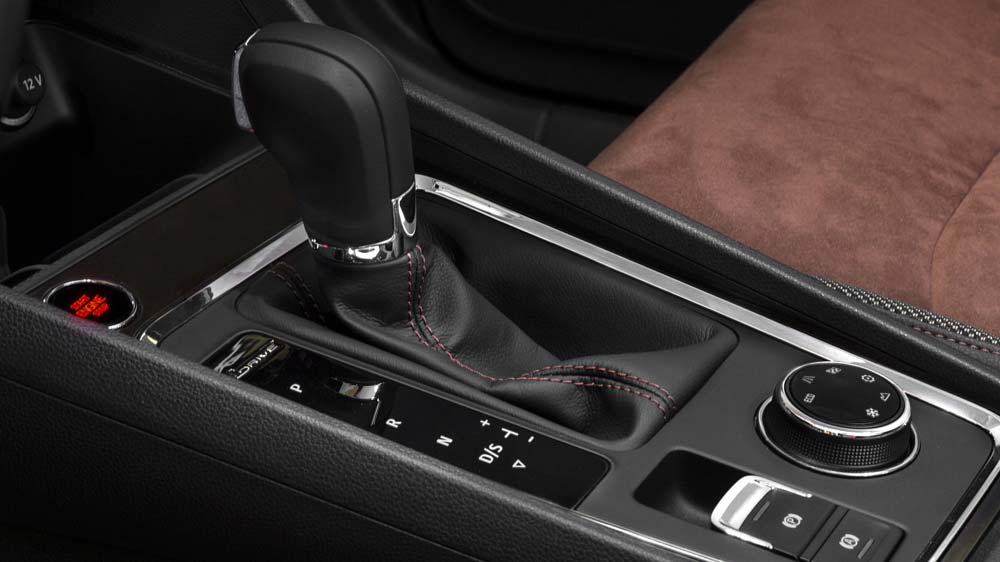
The usual DAB radio, navigation and Bluetooth connectivity options are in place, with voice control and four USB sockets dotted around the car. The mapping also includes 12 months of updates, live traffic information, and even parking and petrol station information.
Practicality & Boot Space
SEAT has made good use of the space in the Ateca. It’s a relatively compact vehicle, measuring in at 4,381mm (or just 3mm longer than a Ford Focus) but somehow stretches the interior to allow adults to relax in both the front and rear seats at the same time.
Head, leg and elbow room are string in the front, with a height-adjustable armrest making it more comfortable for tall adults to relax. The same holds true in the rear, where leg, elbow and headroom are all strong. Of this size of car, it’s also the one you’d be least upset about being the middle passenger in the back, as even that has just about enough room.
It feels more spacious than it is, thanks to side windows that don’t rise sharply upwards, as they don on so many rivals. The extra light inside makes an enormous difference to the perception of space.
The rear seats split 60/40 and the backs fold down, but they don’t go flat and leave quite a hump. Bulky loads could be a problem because of that, despite the sizable boot area. Seats up, it’ll take 510 litres of luggage, which is marginally more than in a Kia Sportage. However, opt for four-wheel drive and that boot capacity drops to 485 litres, which is marginally less than in a Kia Sportage.
Safety
Every Ateca comes with a range of safety equipment that you’d expect from any car of this type, including automatic emergency braking and a system that monitors the driver for fatigue. You have to move to the FR model for automatic lights and wipers, while the Xcellence model adds adaptive cruise control, lane assist and traffic sign recognition.
Back in 2016, EuroNCAP smashed a few Atecas in the name of science, giving it a full five-star crash safety rating.
Options
SEAT has been brave with the Ateca, as there’s only one option - do you want a panoramic sunroof? That’s an extra £1,060 you’ll need to find. Everything else is included in a trim level somewhere, and that includes paint - a flat blue paint job costs nothing, and neither does a metallic red.
That means you’ll need to pick your trim levels carefully. SE is the entry-level and comes with a smattering of kit, while SE Technology adds navigation and some smartphone connectivity.
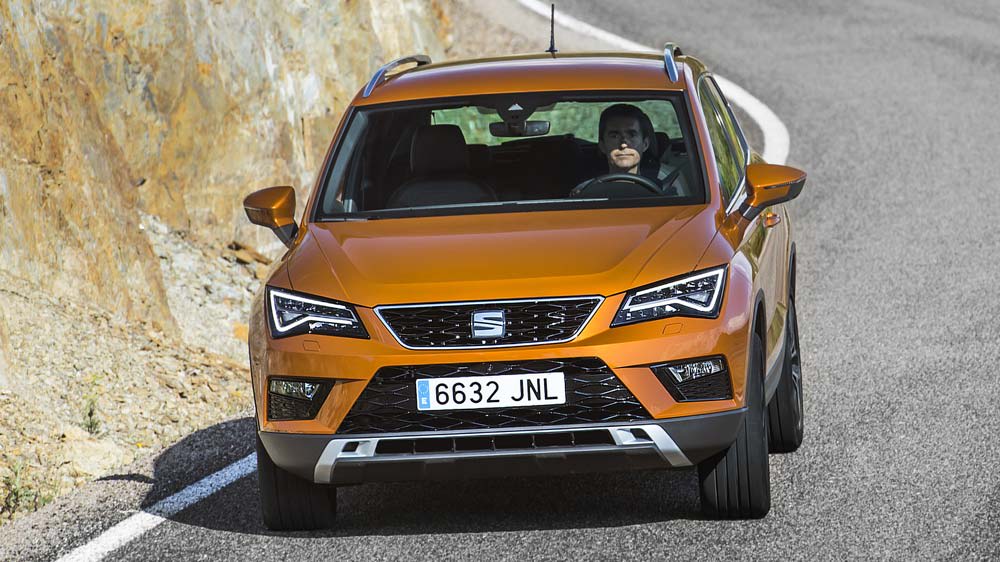
FR is where it starts getting sensible, with stylish cosmetic trim and some useful convenience and safety options such as automatic lights and wipers. FR Sport adds larger wheels and a digital instrument panel, as well as heated, leather-covered, sports seats.
Xcelence is the luxury model, with microsuede seats, LED interior lighting, keyless entry and a reversing camera amongst a long list of equipment fitted as standard. Finally, Xcellence Lux adds a digital instrument panel, the same heated seats as in the FR Sport, and an electric tailgate.
Who Rivals The Seat Ateca?
There are more than 20 cars that could be considered direct rivals for the Ateca, and a number of those come from within the same manufacturing group. The Volkswagen Tiguan adds a soupcon of premium feel, with some softer plastics and more pleasant materials dotted around the cabin. The Skoda Karoq does away with any of the excitement and Spanish flair, replacing it with utterly sensible design choices.
The best-selling rival, at least historically, has been the Nissan Qashqai which is packed with equipment but is feeling its age. It’s still spacious though, and still looks good, but the infotainment is a generation behind and the interior feels a little cheap.
Peugeot's 3008 brings distinctive style, strong practicality and frugal running costs to the party, and the Ford Kuga takes a more car-like approach and eschews some of the SUV style.
Verdict & Next Steps
The SEAT Ateca does what it needs to do as an SUV, but only just. There’s plenty of passenger space, an average boot and no clever tricks like removable seats or hidden floors. On the surface, it’s a well-packaged, mildly attractive, middling SUV.
However, the way it drives marks it out from its rivals. Of course, it’s never going to be a sports car, but most people are never going to be race drivers. The Ateca allows you to fulfil all the sensible points of motoring that family life forces upon you, while allowing you to smile a little as you make your way through to middle age.
Where to next?
- SEAT Ateca car leasing available from just £227.16 per month
- Looking for a great car lease deal? Check out our incredible range of car lease deals
- New family SUV? Read our latest Car Reviews including our Kia Sportage Review or Peugeot 3008 Review
- Want to know more about leasing? Take a look at our comprehensive Leasing Guides
- Interested in everything motoring? Why not catch up on all the latest Car Leasing News.
*Score based on Select’s unique meta score analysis, taking into account the UK’s top six leading independent car website reviews of the Seat Ateca.
**Correct as of 26/10/2020. Based on 9 months initial payment, 5,000 miles over a 48 month lease. Initial payment equivalent to 9 monthly payments or £2,044.44 Ts and Cs apply. Credit is subject to status.
.jpg)
.jpg)
.jpg)
.jpg)









